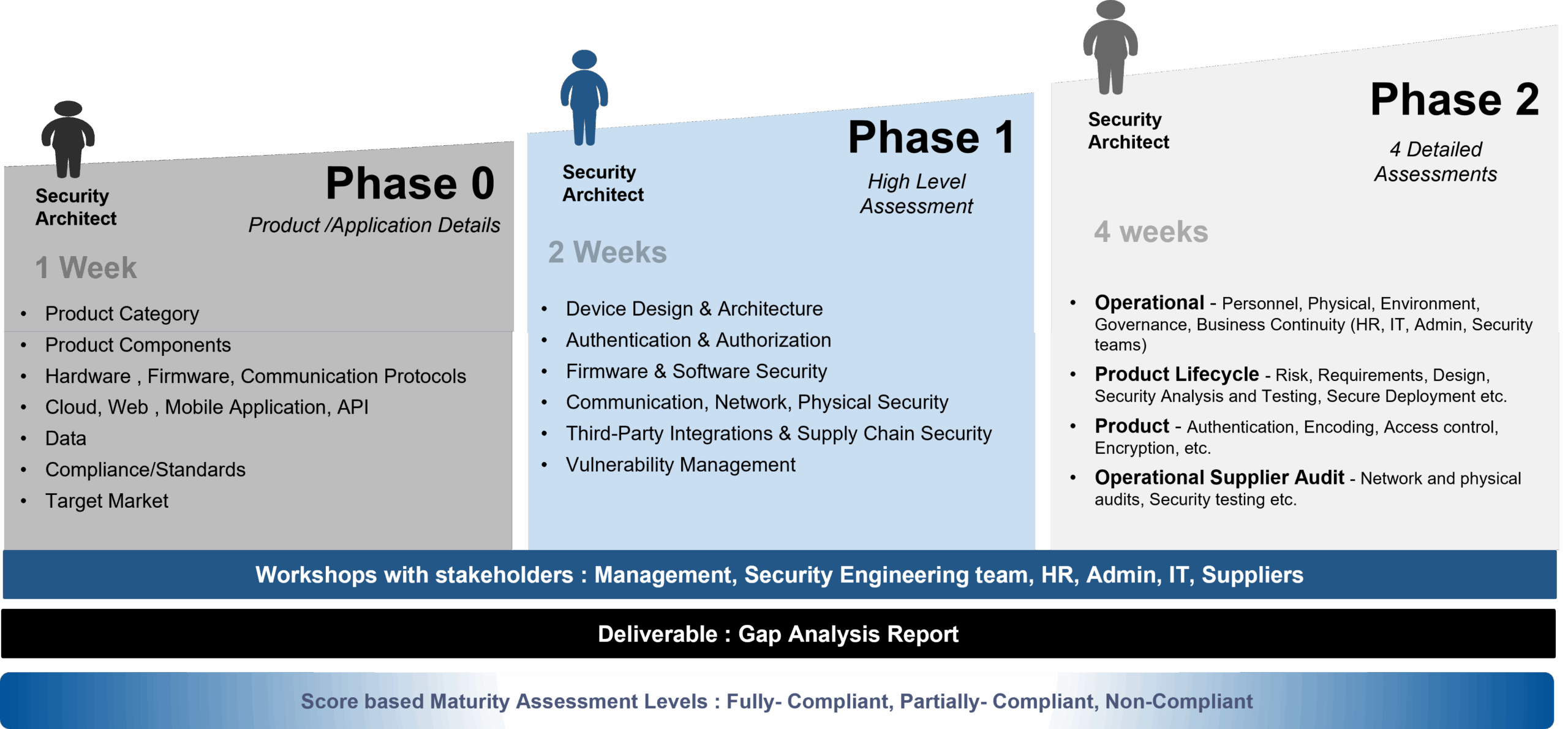Cybersecurity Assessment Framework
- eInfochips
- Cybersecurity Assessment Framework
As part of eInfochips Cybersecurity consulting services, we have developed a score-based Assessment Framework across three phases. Each phase comprises of set of questions to assess the overall Cybersecurity maturity of the product/application in scope.
The first phase of the framework focuses on gathering critical product and application details as a foundation for security planning. During this phase, which spans one week, the Security Architect is responsible for identifying and understanding the product’s components, including hardware, firmware, and communication protocols. The phase also involves evaluating software platforms such as cloud, web, mobile applications, and APIs, as well as analyzing data handling practices. Ensuring compliance with industry standards and regulations is a key focus, alongside identifying the product’s target market.
In the second phase, the Security Architect conducts a High-level assessment covering key security areas including Device Design & Architecture, Authentication & Authorization mechanisms, Firmware & Software Security, Communication, Network, and Physical Security, Third-Party Integrations & Supply Chain Security and Vulnerability Management.
In the final phase, the Security Architect conducts four key assessments. The Operational Assessment covers personnel, physical security, governance, and business continuity, involving HR, IT, admin, and security teams. The Product Lifecycle Assessment evaluates risk management, design, security testing, and deployment. The Product Security Assessment focuses on authentication, encoding, access control, and encryption. Lastly, the Operational Supplier Audit includes network and physical audits along with security testing to assess third-party risks.
In the end, we present a detailed Gap Analysis Report covering Assessment process, findings and recommendations.

The assessment framework describes three levels of maturity:
- Fully-Compliant – At this level, all security controls, policies, and frameworks are effectively implemented, meeting industry standards and regulatory requirements. There are no critical vulnerabilities, and risk remediation processes are in place. Regular security audits, threat modeling, and vulnerability management are conducted to maintain a strong security posture.
- Partially-Compliant – Organizations at this level have some security controls in place but may have gaps in compliance or unaddressed vulnerabilities. While security policies exist, they may not be fully enforced, and risk remediation efforts are still in progress. Regular security assessments and code change impact analysis are required to achieve full compliance.
- Non-Compliant – This level indicates significant security risks due to the lack of proper security controls, outdated security policies, and unresolved vulnerabilities in hardware, firmware, web apps, mobile apps, and cloud security. Organizations must take immediate action to implement security solutions, conduct vulnerability assessments, and establish a structured risk mitigation plan to enhance their security posture.





